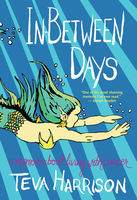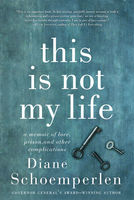Writing What’s Closest to Home
By Stacey May Fowles & Submitted by Kevin
Last year, when I turned in the first draft of a memoir on rape trauma, my editor had a pretty reasonable observation. Despite divulging various details of violation, illness, and the path to getting better, despite taking readers inside a series of difficult therapy appointments, a PTSD diagnosis, and my own dark thoughts, there was one component of the manuscript that was glaringly missing.
Where was my partner of ten years in all of this? Why had I almost entirely omitted him from the narrative?
My husband was definitely there for me during the gruelling, long haul of recovery, but without even really thinking about it, I’d almost completely left him out of the retelling. That’s not because he isn’t important to me, or a compelling part of the story, but because I’ve always had this impulse to hide him from readers. (It’s a shame, really. He’s pretty nice.) While I’m not exactly the most guarded writer in the world— in the form of personal essays, I’ve shared everything from the minutia of my mental health, to my struggles with infertility—for whatever reason I have this knee-jerk protection of my most private, domestic dynamic.
After my editor’s observation, I thought a great deal about this reluctance. Maybe he was missing because the relationship feels like a rare escape in a world that can be toxic and abusive. Maybe it’s only natural to want to keep that haven to myself, strictly separate from my public life. Hell, maybe I’m even a little scared that I can’t do him justice.
Sure, I may have signed up for invasive commentary and criticism as part of this profession (whether or not that’s fair is another conversation entirely) but just because someone shares a home with me doesn’t mean they deserve the same. In fact, maybe I even work too hard to make sure that privacy and a sense of safety is not on the very long list of things my partner has sacrificed by sharing his life with a writer. (Sorry for all those other things, honey.) Although he doesn’t seem to worry about it all that much, when I see Google autofill proof of people digging for his identity, it sets off a few alarm bells.
Good memoir writing is that which, while working from a place of humility, nuance and empathy, centres the self in the story, and doesn’t project thoughts and motivations on others. If we’re ethical about it, we also want to protect our subjects from any unnecessary scrutiny, while still honouring the whole truth. This can be a fine, difficult line to walk, and when it comes to coupling, it’s one that some writers avoid by never letting readers into their kitchens, living rooms, and bedrooms. Beyond that, our most personal dynamics can actually be the most difficult to write well—especially if they’re the ones we’re currently happy with. We’re so close to the subject matter, not to mention the ramifications of writing the wrong thing, it can be a challenge to step back and get the perspective necessary to make it compelling.
In In-Between Days, Teva Harrison’s recent and widely celebrated graphic memoir on living with metastatic breast cancer, she writes beautifully and generously about her connection to her husband, David. (Full disclosure, I call both of them close friends.) The book offers an example of a positive relationship skillfully rendered in literature, one where Harrison emphasizes the vital role our partners play during the fraught periods of our lives. She sweetly describes how the pair fell in love, how when they first met she thought he was pretty, slight, and strong, with hazel sunflower eyes that “seemed to bloom just for me.”
Harrison gives her readers snapshots of the pair dancing around their home together, explains how they struggle to be apart when travel is a necessity, how he understands her weaknesses and plays to her strengths. All of these very intimate details are integral to the fact that now, after being diagnosed, he continues to be a vital ingredient in her day-to-day hope and perseverance. Put simply, her narrative of endurance and optimism would be incomplete without him, and their connection offers a warm reprieve from what it means to live with the disease.
“(W)hen I break, when I can’t adhere to my own edges, when I shatter with the winds, David catches me,” she writes. “He is steady against the wracking, wretched storm of my tears. I hold onto him for dear life, both of which are all I ever wanted, anyhow.” Harrison’s sentiments transform the deeply personal into the universal, as readers are moved by the familiar safety of what it means to be in love long term.
While In-Between Days is a celebration of love in the face of hardship, This Is Not My Life is more about the hardship born of love. Diane Schoemperlen’s recently released memoir takes us directly inside the dynamic between herself and the man she fell for a decade ago, one serving a life sentence for second-degree murder. The exclusion of details about Shane, Schoemperlen’s partner for six years, would obviously be impossible in this particular case, but Schoemperlen manages to tell a necessary story without infringing too heavily on his privacy.
Your CanLit News
Subscribe to Open Book’s newsletter to get local book events, literary content, writing tips, and more in your inbox
The story is, after all, really about her and not him—what she experienced, what she withstood, and how it changed her life and sense of self in myriad ways. It’s certainly hers to tell, but it’s also evident that she’s made the deliberate choices throughout to be sensitive and thoughtful. (Read: not exploitive.)
“(I) understood that no matter how much I loved him, I did not have the power to make up for or undo the damage—neither the damage he’d suffered nor the damage he’d done,” she writes. “Finally I had stepped out of the story and surrendered to reality. Now I knew I could not save him. I could only save myself.” Despite how turbulent, and at times damaging their love affair was, and how necessary it is for her to tell the complete story, she works from an admirable place of respect and protection—even when the relationship has long since dissolved.
Our most intimate relationships are often the places where we allow ourselves to be at our most vulnerable, where we are the most like our true selves, and it can be a daunting challenge to let go of the secrets inside that box. While it’s certainly attractive to leave blank spaces where your mate should be, my editor is absolutely right—there are memoir projects where excluding the love of your life becomes near impossible, and even damaging to what you’re trying to achieve. Intimacy can be a tricky space to write in, but there’s a great deal of human truth in it. When executed well, it can be entirely rewarding for writers and readers alike.
Like the examples that Harrison and Schoemperlen provide, some of the more moving, affecting, and relevant non-fiction explorations are the ones that delve into that inexplicable, indecipherable, sacred space between two people. After all, who doesn’t identify with the experience of love? And who knows, maybe mine will even make it into the next draft.
The views expressed by Open Book columnists are those held by the authors and do not necessarily reflect the views of Open Book.
Stacey May Fowles is an award-winning journalist, novelist, and essayist whose bylines include The Globe and Mail, The National Post, BuzzFeed, Elle, Toronto Life, The Walrus, Vice, Hazlitt, Quill and Quire, and others. She is the author of the bestselling non-fiction collection Baseball Life Advice (McClelland and Stewart), and the co-editor of the recent anthology Whatever Gets You Through (Greystone).



